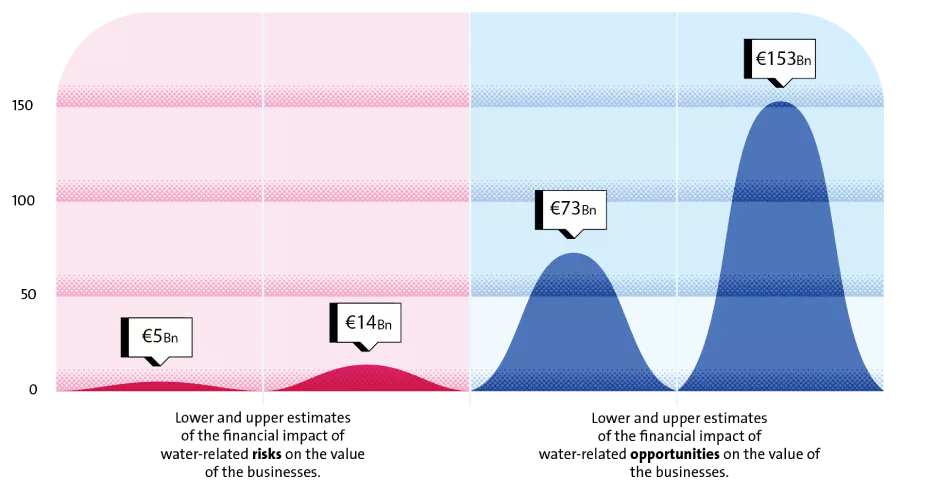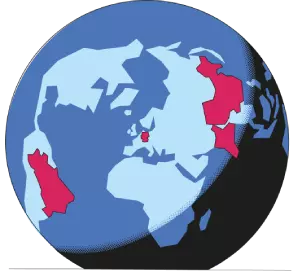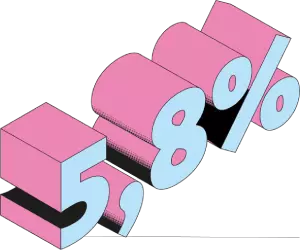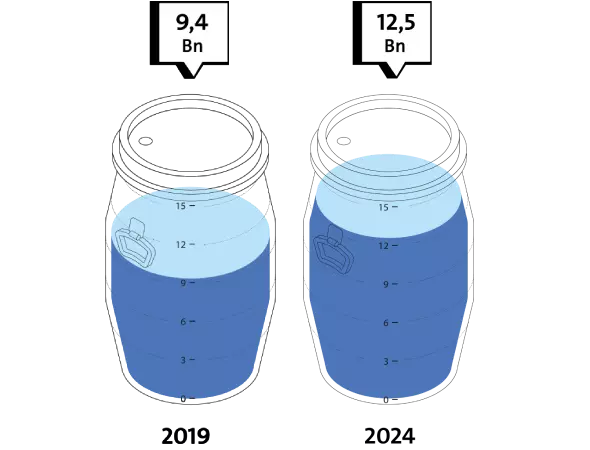Two recent market studies reveal market growth opportunities in the water treatment sector.
Conservation of water quality, access and the risk of scarcity are all issues of concern to industry leaders because they are vital to the success of their activities. Forward-planning to reflect the threat of greater water scarcity therefore offers opportunities for winning new business. In Europe, the CDP survey polled 193 business leaders on these questions at the request of the specialist platform Water Europe. The results were published in March 2020. The MarketsandMarkets.com report, published in 2019, based on data collected from 20 international stakeholders, details the growth margins for this sector between 2019 and 2024.
Financial impacts of water quality for European businesses
Survey of 193 business leaders in Europe from key industries with a vital need for water of a consistent quality in their industrial processes: agri-food, energy, textiles and materials, chemicals, pharmaceutical and mining.
Risk management
Responses from business leaders to CDP’s online questionnaire on threats to water scarcity, access and quality:
- 62% state they are highly dependent on water availability and quality
- 78 % declare that the availability of good quality water is important or vital to the financial health of their company
- 67 % feel this also applies in areas outside their core business
- 61 % consider water-related risks could directly impact their operations and alter their wider value chain in the event of severe drought or flooding
- 100 % estimate the total financial impacts of risks relating to water scarcity, access and quality to be between €5bn and €14bn. The large spread in the estimates reflects the difficulty in evaluating these risks and suggests that this amount may actually be higher in the years ahead
Growth opportunities
Responses from business leaders to CDP’s online questionnaire concerning the positive financial impacts of dealing with these threats:
- 74 % consider there are growth opportunities in the water industry, mainly in the area of water efficiency
- 100 % have set targets and goals at several levels, based on the sixth United Nations’ Sustainable Development Goal for 2030 (Ensure availability and sustainable management of water and sanitation for all). Around 100 of the 360 targets identified concern water extraction and use. Once reached, these targets could deliver financial gains of between €73bn and €153bn
The financial value of water-related risks and opportunities

Analysis
According to CDP, understanding the true importance of proper management of water-related risks, and having a clear vision of the business opportunities relating to the quality of this management are two challenges that wastewater treatment business leaders face. On the one hand, there are many stakeholders involved: elected representatives, citizens and businesses must work together to protect water resources. On the other hand, businesses that are heavily dependent on water for maintaining and expanding their activities are also required to contribute to protecting the wellbeing of local communities and the health of ecosystems, in line with the targets of SDG 6.
Regular market growth worldwide (2019-2024)
Survey of 20 major players in the industrial wastewater treatment sector in the five global regions defined in the report: North America, Asia Pacific, Europe, Middle East and Africa, South America.


India, Brazil, China and Germany: Four countries with high demand for products needed water quality, in turn linked to their industrial growth (2019 to 2024).
In 2018, the market was estimated to be worth around €8.85bn (USD10.6bn). The compound annual growth rate (CGAR) is 5.8% over 5 years (2019 to 2024).

The sector’s growth rate estimated in response to the expected tightening of water protection legislation.
Source : Industrial Wastewater Treatment Market, MarketsandMarkets
Analysis
Two factors are driving growth in this market: increasing demand from industry for products such as biocides and disinfectants in particular, as well as the use of zero liquid discharge technologies (ZLD). This is a worldwide trend, caused by the needs of industrial companies to ensure the uninterrupted continuity of their activities, particularly in the power generation industry, and by increasingly strict regulations on water quality and resource protection.

